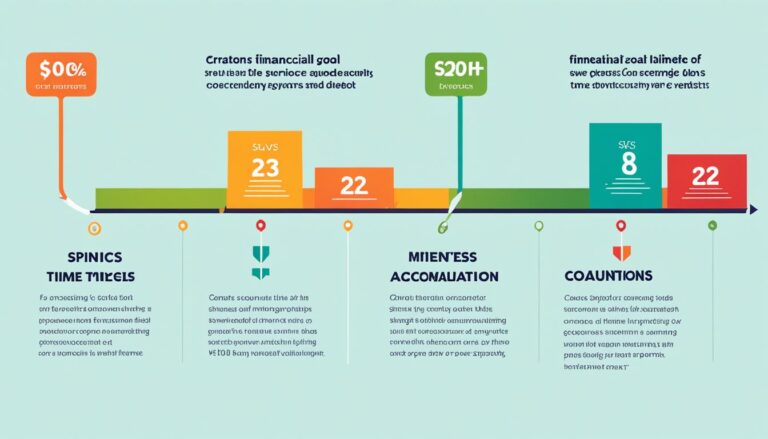Achieve Your Dreams: Motivation and Goal Setting

“The purpose of setting goals is not to change our future; it’s to change our reality in the present.” – Jordan B. Peterson
Setting goals is a powerful tool that can transform your dreams into reality. It is the first step towards finding motivation and taking action to pursue what you truly desire. However, goal setting is not just about envisioning a future outcome; it is about creating a new reality in the present moment.
In today’s fast-paced world, it is easy to get caught up in the busyness of life and lose sight of our aspirations. We may find ourselves lacking the motivation and direction needed to make progress. That’s where goal setting becomes essential. By defining our present situations and future objectives, we gain clarity and purpose. Working towards our goals brings fulfillment and a sense of achievement.
Whether your dreams revolve around financial success, health and wellness, personal growth, or any other area, effective goal-setting is key. It provides structure, focus, and a roadmap for success. It ignites the fire within you and drives you to become the best version of yourself.
This article will explore the art of setting achievable goals and how to stay motivated to realize them. It will provide valuable insights, practical tips, and inspirational stories to inspire and guide you on your journey towards achieving your dreams.
Key Takeaways:
- Setting goals is not about changing the future; it’s about changing your reality in the present.
- Goal setting provides clarity, purpose, and a roadmap for success.
- Working towards your goals brings fulfillment and a sense of achievement.
- Effective goal-setting is crucial for achieving financial success, health and wellness, personal growth, and other areas of your life.
- This article will provide insights, tips, and stories to inspire and guide you on your journey towards achieving your dreams.
The Importance of Goal Prioritization and Objectives
Setting goals is not only about having a dream, but also about taking actionable steps towards achieving it. By setting priorities and establishing clear objectives, you can transform yourself and strive towards personal growth and fulfillment. Prioritizing your goals allows you to focus your time, energy, and resources on what truly matters, ensuring that your efforts are strategic and meaningful.
When setting goals, it is important to choose objectives that inspire and intrinsically motivate you. These are the goals that resonate with your values and aspirations, igniting a fire within you to pursue them with passion and determination. By aligning your goals with your personal values, you can uncover your true potential and fuel your desire for personal transformation.
Tracking your progress is another crucial aspect of goal setting. Whether it’s through journaling, creating visual progress charts, or utilizing digital tools, monitoring your achievements keeps you accountable and motivated along the way. Seeing how far you’ve come can provide a sense of accomplishment and encourage you to keep pushing towards your objectives.
It’s also essential to ensure that your goals align well together. By creating harmony and synergy between your objectives, you can avoid conflicting priorities and optimize your efforts. This involves identifying any potential overlaps or conflicts between your goals and making necessary adjustments to ensure they complement each other.
However, it’s important to remember that you don’t have to embark on your goal-setting journey alone. Seeking help and support when needed is a sign of strength and a way to overcome obstacles more effectively. Ayelet Fishbach’s book “Get It Done” offers valuable insights into managing various objectives, seeking support from others, and maintaining motivation throughout the process.
 <!–
<!–
Heading 3 Goes Here
–><!–
- List Item 1
- List Item 2
- List Item 3
–>
Prioritizing goals and setting clear objectives play a pivotal role in personal transformation. By identifying what truly matters to you, tracking your progress, ensuring goal alignment, and seeking support, you can embark on a meaningful journey of self-discovery and growth. Remember, it’s not just about achieving your goals; it’s about the person you become along the way.
The Utility of To-Do Lists and Effective Task Management
To-do lists are an invaluable tool for managing your tasks and ensuring effective task management. They provide a clear and organized structure, helping you prioritize and focus on what matters most. Not only do they help you stay organized, but they also promote mental clarity and reduce overwhelm. By outlining your tasks and goals, you can approach your work with intention and purpose.
Oliver Burkeman, a renowned productivity expert, emphasizes the importance of managing our limited time by prioritizing a manageable number of essential tasks. This ensures that your efforts are directed towards the most important and impactful activities. By discerning which tasks are essential and focusing on them, you can optimize your productivity and make significant progress.
Fishbach and Leidy Klotz further emphasize the significance of task prioritization. By prioritizing your tasks, you ensure that you are allocating your time and energy to the activities that align with your goals and bring you closer to achieving them. Prioritization helps you identify the critical tasks that require immediate attention and allows you to create a roadmap for success.
When it comes to managing your tasks effectively, utilizing tools like Trello and calendars can greatly streamline your process. These tools provide a visual representation of your tasks, deadlines, and progress, enabling you to stay organized and focused. By leveraging technology, you can optimize your task management and ensure that your efforts align with your goals.

In order to illustrate the practicality and effectiveness of to-do lists and task management, here is an example of a simple to-do list:
| Task | Priority |
|---|---|
| Complete project proposal | High |
| Send follow-up emails | Medium |
| Attend team meeting | Low |
| Research industry trends | Medium |
This simple to-do list allows you to visually see your tasks and prioritize them based on their level of importance and urgency. By following this system, you can stay focused on what needs to be done and work towards achieving your goals in a structured and efficient manner.
Addressing the Midpoint Challenges
Maintaining motivation is vital throughout your journey of pursuing goals. However, it can become particularly challenging when you reach the midpoint. It’s during this stage that feelings of exhaustion, doubt, and complacency can start to creep in. But don’t worry, there are effective strategies that can help you overcome these challenges and sustain your momentum.
According to Fishbach, one approach to maintaining motivation is to set smaller, incremental goals. Instead of focusing solely on the end result, break down your larger goals into smaller, more manageable milestones. By doing this, you’ll find it easier to maintain a sense of progress and accomplishment along the way. Celebrating each incremental achievement can also serve as a source of motivation and encouragement.

Maya Shankar, a renowned psychologist, endorses this approach and emphasizes the significance of acknowledging and celebrating progress at midpoint milestones. By taking the time to reflect on your achievements and appreciate how far you’ve come, you’ll regain a sense of perspective and boost your morale.
To better illustrate this concept, consider the following hypothetical example of a fitness goal. Let’s say your ultimate goal is to run a marathon. At the midpoint of your training, focus on running a half marathon as a smaller, incremental goal. Once you successfully complete the half marathon, it serves as a testament to your progress and keeps you motivated to continue training for the full marathon.
By breaking down your goals into smaller sets and counting achievements in increments, the journey becomes less overwhelming and more fulfilling. It allows you to maintain momentum and constantly renew your motivation as you progress further.
Addressing Midpoint Challenges – Key Strategies:
- Set smaller, incremental goals to sustain motivation.
- Periodically reflect on progress and celebrate achievements.
- Break down larger goals into smaller milestones for a sense of accomplishment.
- Find inspiration in acknowledging and appreciating progress at midpoint milestones.
| Challenge | Strategy |
|---|---|
| Feeling overwhelmed | Break goals into smaller, manageable milestones. |
| Lack of motivation | Reflect on and celebrate progress achieved so far. |
| Doubt and complacency | Find inspiration in acknowledging midpoint milestones. |
Prioritizing Tasks for Effective Goal Achievement
In order to achieve your goals effectively, it is crucial to prioritize your tasks and manage distractions. By identifying tasks that align with your primary goals and removing potential distractions, you can optimize your focus and energy towards achieving your objectives. Peter Akkies, a renowned productivity expert, emphasizes the importance of distinguishing between busy work and tasks that contribute to your core priorities. This section will explore strategies for task prioritization, managing distractions, and maximizing your efforts for effective goal achievement.
One effective tool that can help you prioritize and manage your tasks is Trello. Trello is a digital project management platform that allows you to organize your tasks, set deadlines, and streamline your workflow. With Trello, you can create task cards, add due dates, and move cards between different lists to track your progress. By visualizing your tasks and setting clear deadlines, you can stay organized and ensure that your efforts are aligned with your overarching goals.
When prioritizing your tasks, it’s important to consider the impact each task has on your goal achievement. Focus on tasks that directly contribute to your primary goals and are essential for progress. This requires evaluating the significance and urgency of each task, and making informed decisions about where to invest your time and energy.
Another key aspect of effective task prioritization is managing distractions. Distractions can come in many forms, ranging from external stimuli such as social media notifications to internal factors like procrastination or lack of focus. By identifying potential distractions and implementing strategies to minimize their impact, you can maintain your concentration and productivity.
Strategies for Managing Distractions:
- Limit your exposure to distractions such as turning off notifications or setting specific intervals for checking emails and social media.
- Create a dedicated workspace that is free from potential distractions.
- Use time-blocking techniques to allocate specific time periods for focused work.
- Practice mindfulness and self-awareness to recognize when you are getting distracted and redirect your focus.
- Break down complex tasks into smaller, more manageable sub-tasks to increase focus and reduce overwhelm.

By prioritizing tasks that align with your primary goals, managing distractions, and utilizing tools like Trello, you can optimize your efforts and make significant progress towards achieving your goals. Stay focused, stay motivated, and remember that effective goal achievement is within your reach.
Dispelling Misconceptions in Goal Setting
When it comes to goal setting, there are common misconceptions that often lead individuals astray. Many believe that achieving goals is solely dependent on personal attributes and behaviors. However, overlooking the influence of the environment can hinder success.
Renowned author Steven Kotler emphasizes the significance of being mindful not only of our natural tendencies but also of the contexts in which we find ourselves. While personal attributes do play a role in goal achievement, sometimes it is necessary to change something in our environment rather than just our behavior.
Understanding the importance of the environment, along with personal attributes, can lead to more successful goal achievement. By creating a supportive and conducive environment, individuals can optimize their chances of success and overcome obstacles that may otherwise impede their progress.
The Importance of Environment in Goal Setting
Creating an environment that fosters success is crucial for effective goal setting. The impact of the environment on behavior and motivation is well-documented. By optimizing your surroundings, you can enhance your focus, increase your motivation, and improve your chances of achieving your goals.
One way to create an environment that supports your goals is by surrounding yourself with like-minded individuals who share similar aspirations. Research shows that social support greatly influences goal attainment. By connecting with individuals who are also motivated to achieve their goals, you can gain valuable insights, receive encouragement, and cultivate a positive mindset.
Additionally, organizing your physical space can have a profound impact on your ability to stay on track. Keeping your workspace clean and clutter-free can improve your concentration and productivity. Create an organized system for managing your tasks, whether it’s through the use of digital tools or physical planners, to maintain a sense of order and structure.
It’s also essential to be mindful of the information you consume. Surround yourself with resources and materials that align with your goals. Whether it’s books, podcasts, or online courses, immerse yourself in valuable content that inspires and educates. By curating a positive and informative environment, you can reinforce your motivation and stay focused on your objectives.
In summary, dispelling the misconceptions surrounding goal setting requires acknowledging the role of the environment in achieving success. By understanding that our surroundings can either support or hinder our progress, we can take proactive steps to optimize our environment for goal achievement. By creating a conducive environment that aligns with our aspirations and motivates us, we can overcome obstacles and propel ourselves toward the realization of our goals.
The Impact of Environment on Goal Achievement
| Benefits of Optimal Environment for Goal Achievement | Strategies for Creating a Supportive Environment |
|---|---|
| • Enhanced focus and concentration | • Surround yourself with like-minded individuals • Organize your physical space • Curate informative and motivational content |
| • Increased motivation and productivity | |
| • Overcoming obstacles and staying on track |
Anticipating Challenges and Building Cognitive Control
Anticipating challenges is a crucial aspect of goal setting, as life often presents unexpected hurdles. Achieving your dreams requires overcoming these challenges and building cognitive control to navigate distractions along the way.
Recognizing Distractions and Interference
Goal pursuit is often accompanied by distractions that can sidetrack your progress. By recognizing these distractions and understanding how they interfere with your focus, you can take proactive steps to overcome them. These distractions can come in various forms, including external stimuli, internal thoughts, or even your own emotional state. It’s important to be aware of these potential distractions and find strategies to manage them effectively.
Developing Evaluation and Decision-Making Skills
Building cognitive control involves developing evaluation and decision-making skills. By critically assessing the challenges that arise and the options available to you, you can make informed choices that bring you closer to achieving your goals. This requires evaluating the potential risks and rewards of each decision, considering the impact on your overall objectives, and staying focused on the most effective path forward.
Organizing and Streamlining Your Efforts
Organizing and streamlining your efforts are essential components of building cognitive control. By setting clear priorities, creating actionable plans, and effectively managing your time, you can optimize your efforts towards goal achievement. Tools like calendars, task management apps, and to-do lists can help you stay organized and ensure that you stay on track.
Table: Cognitive Control Strategies
| Strategy | Description |
|---|---|
| Awareness | Recognize distractions and interference that may arise during goal pursuit. |
| Mindfulness | Stay present and focused on the task at hand, minimizing distractions. |
| Goal Management | Set clear goals and define actionable steps to achieve them. |
| Time Management | Organize and prioritize your tasks to make the most of your available time. |
| Reflection | Periodically review your progress, evaluate your strategies, and make necessary adjustments. |
| Seeking Support | Reach out to mentors, peers, or professionals who can provide guidance and encouragement. |
By implementing these strategies and continuously honing your cognitive control skills, you can effectively navigate the tension between overcoming challenges and achieving your goals. Building cognitive control helps you stay on track, adapt to obstacles, and maintain focus on your journey towards turning your dreams into reality.
Conclusion
Turning your dreams into reality requires a combination of focus, adaptability, and motivation. It’s important to understand that the path to success may not always be smooth, but by staying determined and open to change, you can achieve your goals.
Setting realistic goals is the first step towards making your dreams a reality. Break them down into manageable milestones and celebrate your progress along the way. Remember, success is not an overnight achievement, but a journey of steady growth and improvement.
Staying motivated is key to staying on track. Surround yourself with positive influences and seek support from friends, family, or mentors who believe in your aspirations. By staying focused on your goals and embracing challenges as opportunities for growth, you’ll overcome obstacles and achieve greatness.
So, start today by setting meaningful goals, staying motivated, and taking action. Your dreams are within reach, and with the right mindset and perseverance, you can turn them into reality. Embrace the journey, seize opportunities, and watch as your efforts transform your life and shape your future.






